Irga is a beautiful ornamental shrub with lush flowering and tasty, healthy berries. The culture is rich in a variety of species and varieties; every gardener will be able to find a specimen suitable for his taste and region. It is important to choose the right plant based on the characteristics of its cultivation.This article talks in detail about all the stages of planting and caring for irga, methods of propagation and pest control, the beneficial properties of the fruit and the best varieties of this berry bush.
| Content:
|
|
Already in the fourth year after planting, you can enjoy the first harvest. Irga continues to bear fruit for forty to fifty, and sometimes more, years. |
Description of the serviceberry
Irga is a deciduous fruiting plant from the Rosaceae family, with high decorative qualities, unpretentious and frost-resistant, early fruiting and fast-growing, hardy and durable. She is not afraid of prolonged drought, strong cold winds, frosts down to forty degrees and below, and attracts bees to the site.
Description of the serviceberry from Igor Bilevich:
The peculiarity of the plant is its abundant flowering, consistently high yield, undemandingness to the place of cultivation and soil composition, a positive reaction to pruning, a pleasant honey aroma when flowering, beneficial properties of the fruit, and disease resistance. Low-growing varieties are planted in flower beds or in remote corners of the garden, and tall varieties are planted as hedges for zoning the area.
|
In adulthood, when the bush has grown greatly, the shrub is used to protect other plants and the area from the penetration of gusts of wind and drafts. |
A multi-stemmed shrub with an average height of about two and a half to three meters consists of a powerful root system that produces a huge amount of shoots, many brown-gray or grayish-pink shoots with dense velvety bark.Round or oval leaf blades with denticles along the edge change color depending on the season. In spring and summer they are dark green, with the arrival of autumn the color changes to yellow, red and bronze shades. It blooms in April–May with corymbose racemes of white or cream flowers. The fruits - apples - ripen in mid or late summer.
Description of serviceberry berries
Small-sized fruits are collected in clusters. As they ripen, they turn from white and cream with a pinkish spot - a blush - into red, purple, bluish-black or purple with an unusual waxy coating. The pulp of the berries is juicy, sweet, aromatic and very tasty.
The average diameter of the fruit is about ten to fifteen millimeters. The berries are consumed fresh and processed, frozen and dried, and used for medicinal and preventive purposes. Compotes and wine, jams and preserves, healing tinctures and decoctions are prepared from them.
|
The apple fruit contains a large amount of vitamins, minerals, acids, fiber, microelements and tannins. Thanks to such a valuable and unique composition, healing from many diseases is possible. These elements have a beneficial effect on almost all organs of the human body. |
Fresh, frozen, dried berries, as well as juice, tea and decoction based on them are used:
- for normal functioning of the digestive system;
- to strengthen the intestinal walls;
- to restore the body after illnesses and strengthen the immune system;
- as a sedative and anti-inflammatory agent;
- for diseases of the throat and oral cavity;
- for the prevention of viral and oncological diseases;
- to improve vision;
- as a blood pressure lowering agent;
- to remove toxins and reduce blood cholesterol;
- for insomnia;
- for diabetes mellitus;
- for ulcers, bedsores and difficult-to-heal wounds as a compress;
- for weight loss;
- to thin the blood and cleanse the walls of blood vessels.
The berries retain all their beneficial properties during freezing, drying and heat treatment.
Description of the best varieties of serviceberry
Smokey
|
In the photo there is a variety of serviceberry Smoky (Smoky) |
- The height of the bush can reach four to four and a half meters.
- Flowering occurs in the last ten days of May.
- Fruiting begins after the third year.
- The berries are aromatic, sweet, without astringency, dark blue, almost black, large - about fifteen millimeters in diameter.
- Productivity is about twenty-five kilograms per bush.
- Strong immunity, high frost resistance.
- Needs protection from birds during fruit ripening.
- Recommended for commercial cultivation.
Krasnoyarsk
|
Irga Krasnoyarskaya |
- The height of the fruit and ornamental bush is three and a half to four meters.
- The berries are purple in color, diameter is about 15 millimeters, weight is up to 4 grams.
- The harvest is consistently high, up to ten kilograms are harvested from one bush.
- The first fruiting occurs in the fourth year.
- Loves open sunny areas.
- Withstands frosts down to -40 degrees or more.
- Propagated by root suckers.
- The use of the fruit is universal.
Pearson
|
The photo shows the variety Pearson. |
- It begins to bear fruit in the third or fourth year after planting.
- Harvest: late July or early August. Maturation is friendly.
- The berries are black and blue, the pulp is very aromatic, sweet and juicy. Diameter – about 18 millimeters.
- Resistant to diseases. Plants must be protected from birds.
- A large amount of root shoots.
- Winter hardiness is high. Suitable for all areas of the North-West region.
Prince William
|
Prince William |
- The height of the crop does not exceed two and a half to three meters.
- Abundant fruiting for thirty-five to forty years.
- It blooms with large snow-white flowers up to two centimeters in diameter.
- The fruits are sweet, spherical, red-purple in color, with an average diameter of about thirteen centimeters.
- Can fully grow in full sun and partial shade.
- Negatively relates to high humidity.
- Withstands frosts down to thirty-five degrees and below.
- The high decorative value of the plant remains until frost.
Starlight Night
|
Serviceberry variety Starlight Night |
- A small tree or shrub grows on average up to three meters.
- The berries are harvested in the first half of July.
- Fruits weighing two to three grams are collected in clusters of ten to fifteen pieces. Ripe apples are dark blue or black with small light specks on the surface. They are distinguished by their high sugar content - up to thirteen percent.
- The growth of the crop is moderate, there are few basal shoots.
- Grows in open and shaded areas. Reacts positively to moderate soil moisture.
- Resistant to diseases, droughts and frosts.
Thiessen
|
Irga alnifolia Thiessen |
- It grows up to five meters in height, has a wide and spreading crown.
- Flowering early. In the first half of July you can already enjoy the fruits.
- The average diameter of the sweet and juicy berries with a slight sourness is about eighteen millimeters, the color is blue-black.
- After planting the seedlings, fruiting occurs in the third or fourth year.
- Resistant to frosts up to thirty degrees.
- Durability - up to seventy years.
Pembina
|
In the photo the Canadian serviceberry Pembina (Pembina) |
- The spherical bush grows up to three and a half meters in height and up to five meters in crown diameter.
- Fruiting occurs in the middle of the summer season.
- Juicy and sugary-sweet berries are colored in a bluish tint, when ripe they are almost black, with a diameter of up to eighteen millimeters.
- Shoots in small quantities.
- Withstands frosts up to fifty degrees.
- Used for making wine.
- Used as a wind barrier.
Planting serviceberry
The overall development of the shadberry and its growth depend on proper planting. Since the plant has a powerful branched root system, it is necessary to strictly observe the placement of seedlings and create optimal conditions for their successful cultivation.
Landing dates
Irgu can be planted in open ground throughout the warm season, but the most favorable are early spring and autumn after leaf fall. These dates will be individual in each region. Approximately this is the end of April or the beginning of May in the spring, the end of September or the beginning of October in the fall.
Important! It takes about three weeks for a seedling to take root, so in the fall it is necessary to plant it in open ground approximately twenty days before the onset of frost.
Selecting a landing site
The unpretentious irga can grow in different areas, but it is preferable to choose places with low groundwater levels, with full sunlight or in light partial shade (several hours a day).
The soil should be loose and light, preferably fertile. Loams and sandy loam soil will definitely bring a high yield.
|
For planting, it is necessary to purchase one-year or two-year-old seedlings with a well-developed trunk and a healthy root system. There should be no damage or minor scratches on the bark. |
Preparing the soil and planting hole
The soil at the proposed planting site is first cleared of plant debris and weeds, dug up (to a depth of about fifteen centimeters) and fertilized. For every meter of land, phosphorus-potassium fertilizers are applied - forty grams or one bucket of compost (rotted humus can be used).
The size of the landing pit is fifty centimeters in diameter and forty centimeters in depth.
Video about planting irgi in open ground:
Landing pattern
In single plantings, the distance between neighboring plants is at least four meters, between rows - two to two and a half meters. To create a hedge, the interval between seedlings is about fifty to seventy centimeters.
You can plant several irgi bushes in one area in a checkerboard pattern, while maintaining a distance of one or one and a half meters.
On a note! For full growth and development, each seedling requires an area of at least four square meters.
Planting irgi seedlings in the ground
|
Planting serviceberry in open ground is not much different from planting other fruit shrubs and is not particularly difficult. |
We carry out the landing as follows:
- The planting hole is filled halfway with prepared nutrient substrate. To prepare it, use part of the soil from the pit, as well as one part each of sand and compost, wood ash and superphosphate.
- A seedling is placed on a mound of earth, all the roots are straightened, covered with earth and watered abundantly. The root collar should remain above the soil level.
- After moisture is absorbed, the area around the bush is mulched with sawdust, peat or humus.
- The crown of the planted seedling is cut off.
Irga care
Caring for irga in the garden is quite simple; the plant does not require special attention from you. However, with proper care, you will receive not only a rich harvest, but also a well-groomed, decorative bush on your site.
Watering
- It is better to water the bushes in the evening, when the sun is setting.
- For this procedure, it is recommended to use a hose with a diffuser so that not only the soil is moistened, but also sprinkling is carried out.
- During dry periods, three to four buckets of water are poured under each adult bush; a young plant requires one to two buckets.
- Watering frequency is about four times a month.
- Each subsequent water procedure is carried out only after the top layer of soil has dried.
- After each watering, the soil around the plants is weeded and loosened to a depth of about ten centimeters.
Video about planting and caring for irga:
Fertilizer application
If the serviceberry seedlings were planted in prepared fertile soil, then the crops will need the first fertilizing only after three to four years.
- In the spring, two hundred grams of potassium, three hundred grams of superphosphate and one bucket of rotted humus are added to the near-trunk circle of plants, at a distance of twenty to thirty centimeters from the trunk.
- Until mid-summer, shadberry is fed with organic fertilizers. For example, an infusion of chicken droppings or slurry.
- At the end of summer or early autumn, fertilizing with potassium sulfate (thirty grams), superphosphate (two hundred grams) and wood ash (about a kilogram) will be required.
Don't forget to read:
How does a raspberry tree differ from a regular raspberry and how to care for it ⇒
Transplanting serviceberry
Usually, experienced gardeners immediately choose a permanent place for the serviceberry so that it does not have to be replanted. This procedure is very difficult and stressful for the plant, since the root system grows very much and it will not be possible to get it out of the ground without damage.
If the need to transplant the shadberry does arise, then it is worth weighing and thinking about everything several times. For example, the diameter of the dug out root part of an eight or nine year old bush is one or even one and a half meters, the depth is about seventy centimeters. In an older specimen, these numbers will be significantly higher.
The bush removed along with the earthen ball is carefully moved into a new planting hole, the surface is watered and mulched.
Video about the rules for pruning shadberry:
Rules for pruning shrubs
In the first two years, it is necessary to cut off all emerging root shoots. The most powerful and strong shoots are left on the plant, from which the main stems will form.
To create a wide and dense crown, you need to trim the tops of the tallest shoots by about one quarter. This haircut is done in early spring - before the buds swell or in the fall - after leaf fall.
Every year it is recommended to carry out thinning or sanitary pruning. Remove shoots growing inside the bush, as well as old, broken and weak ones.
|
When removing two to three old branches, it is recommended to leave the same number of strong trunks from the root shoots. |
Attention! Places of cuts on adult shoots must be lubricated with garden varnish or oil paint on drying oil. Annual shoots do not need to be treated.
Preparing for winter
Preparing shadberry for winter involves sanitary and thinning pruning, fertilizing and digging up the area.The culture does not need shelter, as it can survive the winter even in severe frosts.
Reproduction of serviceberry
Seeds
This is the longest method of reproduction. It is advisable to use freshly harvested seeds for it, which are extracted from ripened fruits. Sowing is carried out immediately in open ground. The beds are pre-fertilized. The seed material is placed at a depth of no more than two centimeters, watered and sprinkled with straw or dry leaves.
|
In the spring, the emerging seedlings are planted so that they are not crowded. A strengthened bush is transferred to a permanent place only in the third year. |
Green cuttings
The most common and most difficult method. Green cuttings ten to fifteen centimeters long are cut from a bush in the summer at the age of five to six years. Leave two pairs of top leaves, the rest are removed. At night, the branches (lower cut) are placed in a container with a stimulating solution, then washed and planted at an angle in a greenhouse. The interval between cuttings is about four to five centimeters.
Important! The optimal temperature in a greenhouse is about twenty-five degrees.
Care consists of systematic moistening and ventilation. After a couple of weeks, hardening begins, gradually accustoming the seedlings to the absence of a greenhouse. First, the cover is removed for several hours, then for the whole day, and then for the whole day. After three weeks, the plants are planted in the garden. The crops are transferred to a permanent plot for the next year.
|
Rooted cuttings of serviceberry |
By layering
Young two-year-old shoots are dug in in early spring, pinning them with wire staples in the prepared grooves. The top needs to be pinched. As they grow, the emerging shoots are sprinkled with humus up to half. Layers can be separated in the fall, and they are planted immediately.It is possible to leave this procedure until next spring.
Dividing the bush
This method is used only when transplanting an adult bush. Old branches are cut off and soil is removed from the root part. The rhizome is divided into several parts, each of which will have two to three healthy and strong shoots. The cuttings are immediately planted in prepared holes, watered generously and a layer of mulch is applied.
Diseases and pests
Igi diseases
Various diseases can arise only if the rules of cultivation and conditions of detention are violated.
- Monilinia - the fruits become covered with a white coating and begin to rot. All affected berries are urgently removed from the bush, and the plant is treated with a solution of Bordeaux mixture (after harvesting).
- Cytosporosis is a fungal infection of young branches that leads to their drying out. It is necessary to cut off all diseased parts of the bush, be sure to burn them away from the plants and provide it with adequate lighting and access to air.
- Phyllosticosis is a leaf spot that can be cured by treating it with fungicides or Bordeaux mixture.
Do not miss:
Pests
Pests often move to shadberry after treating other garden crops, and numerous root shoots help them in this. One of the effective preventive measures is timely removal of growth. Also, to prevent all kinds of pests, it is worth establishing a watering regime, harvesting in a timely manner and carrying out thinning pruning.
Possible pests of serviceberry are moths, apple aphids, hawthorn, leaf rollers, and moth caterpillars. To combat them, various drugs are used: “Karbofos”, “Confidor”, “Decis”, “Aktellik”, “Fufanon”, “Calypso”.
Irga is a plant with high decorative properties and unique medicinal properties.Its unpretentiousness and endurance allow even a novice gardener to grow a lush and productive bush.
You might be interested in:
- Garden blueberries: planting and care in open ground ⇒
- Detailed recommendations for planting and caring for gooseberries ⇒
- Planting and caring for raspberries in open ground ⇒
- Garden blackberries: photos, planting and care in open ground ⇒
- Rules for planting strawberries in open ground and under covering material ⇒
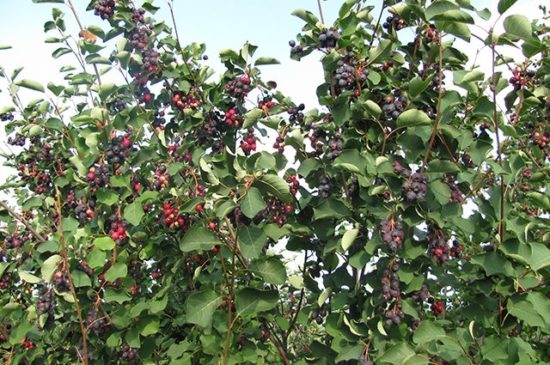

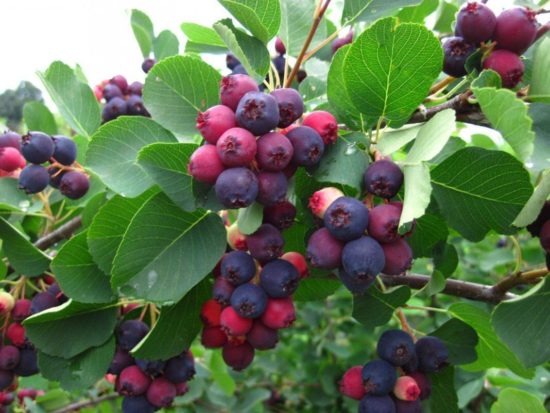
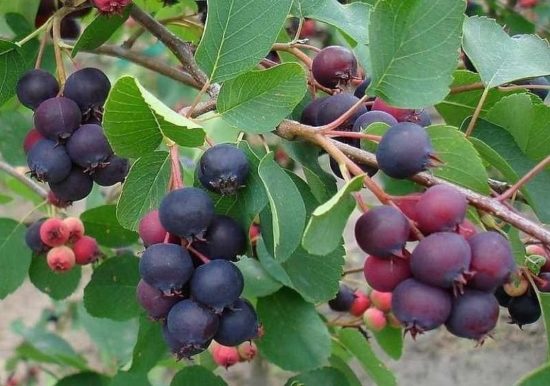
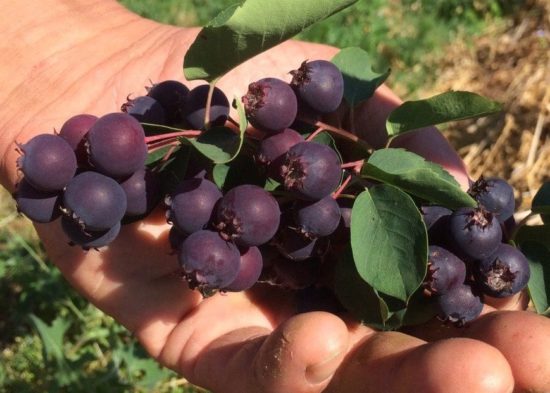
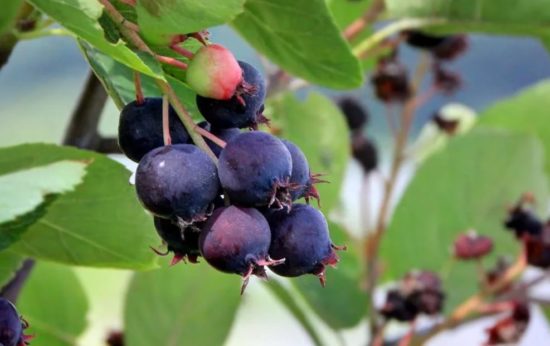
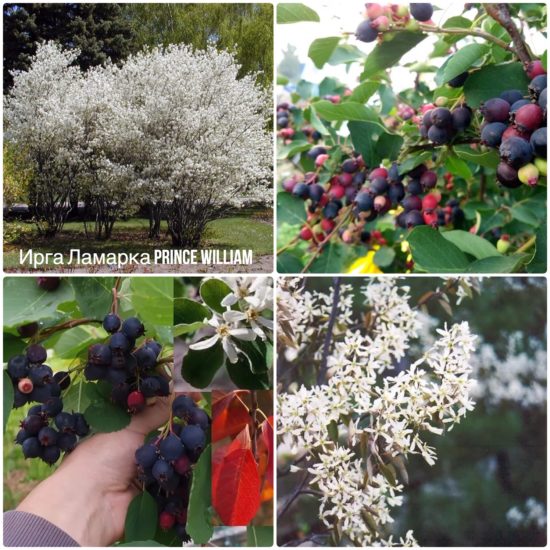

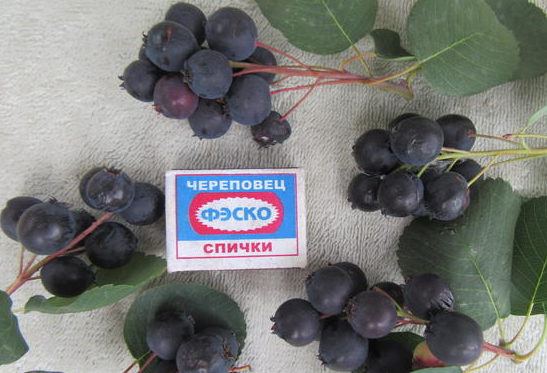
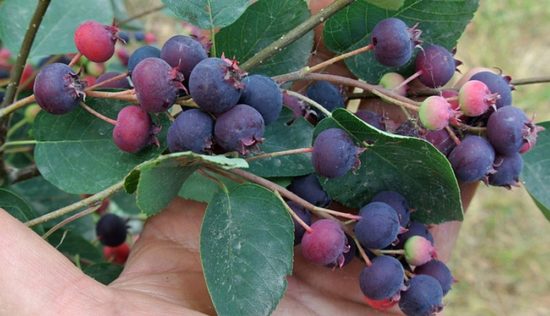
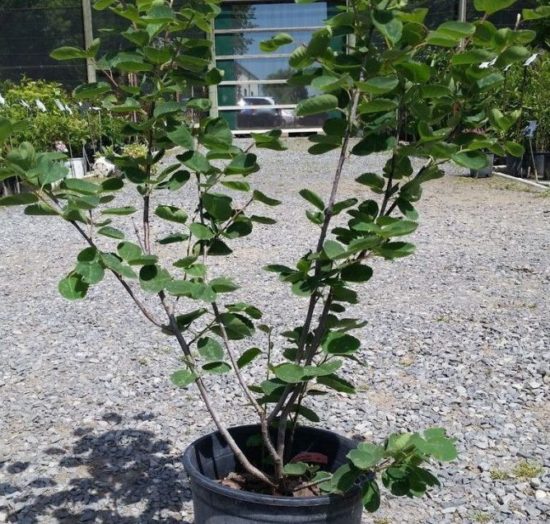

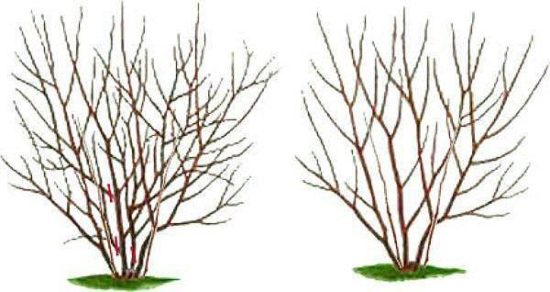
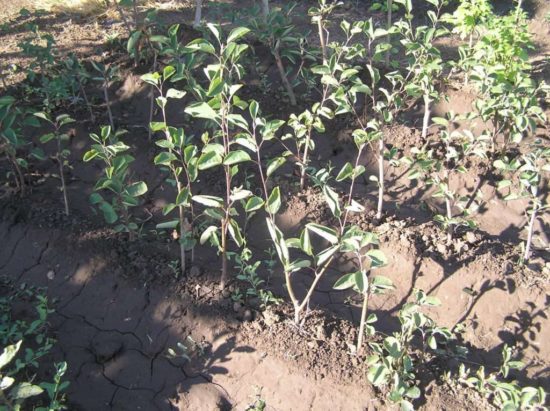
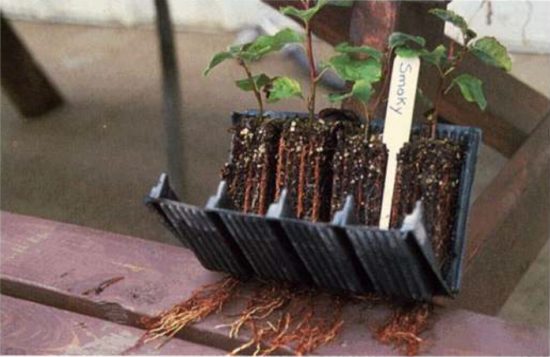

 (1 ratings, average: 4,00 out of 5)
(1 ratings, average: 4,00 out of 5) CUCUMBERS NEVER GET SICK, I'VE BEEN USING ONLY THIS FOR 40 YEARS! I SHARE A SECRET WITH YOU, CUCUMBERS ARE LIKE THE PICTURE!
CUCUMBERS NEVER GET SICK, I'VE BEEN USING ONLY THIS FOR 40 YEARS! I SHARE A SECRET WITH YOU, CUCUMBERS ARE LIKE THE PICTURE! You can dig a bucket of potatoes from each bush. Do you think these are fairy tales? Watch the video
You can dig a bucket of potatoes from each bush. Do you think these are fairy tales? Watch the video
 How our fellow gardeners work in Korea. There is a lot to learn and just fun to watch.
How our fellow gardeners work in Korea. There is a lot to learn and just fun to watch. Eye trainer. The author claims that with daily viewing, vision is restored. They don't charge money for views.
Eye trainer. The author claims that with daily viewing, vision is restored. They don't charge money for views. A 3-ingredient cake recipe in 30 minutes is better than Napoleon. Simple and very tasty.
A 3-ingredient cake recipe in 30 minutes is better than Napoleon. Simple and very tasty. Therapeutic exercises for cervical osteochondrosis. A complete set of exercises.
Therapeutic exercises for cervical osteochondrosis. A complete set of exercises. Which indoor plants match your zodiac sign?
Which indoor plants match your zodiac sign? What about them? Excursion to German dachas.
What about them? Excursion to German dachas.